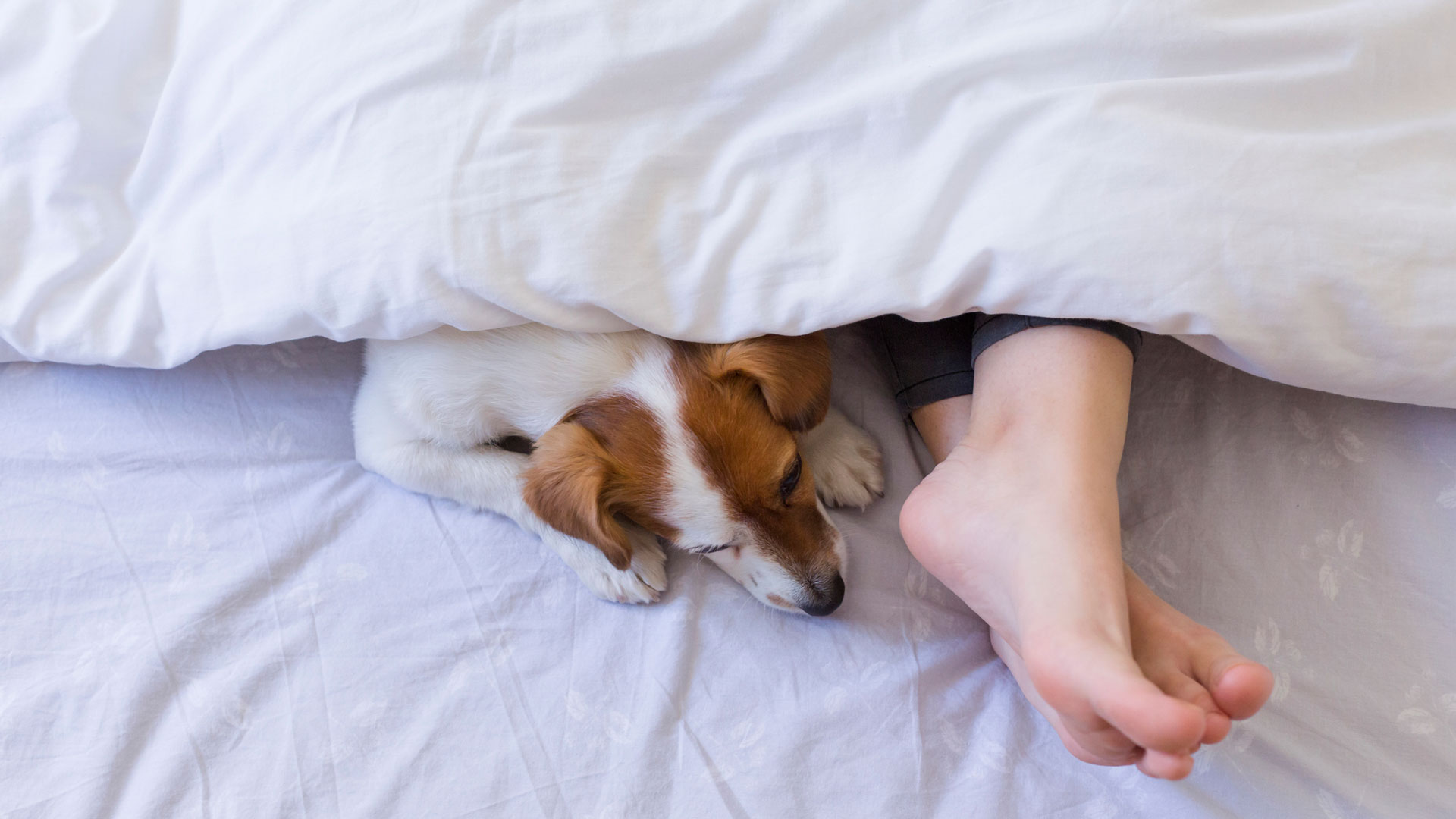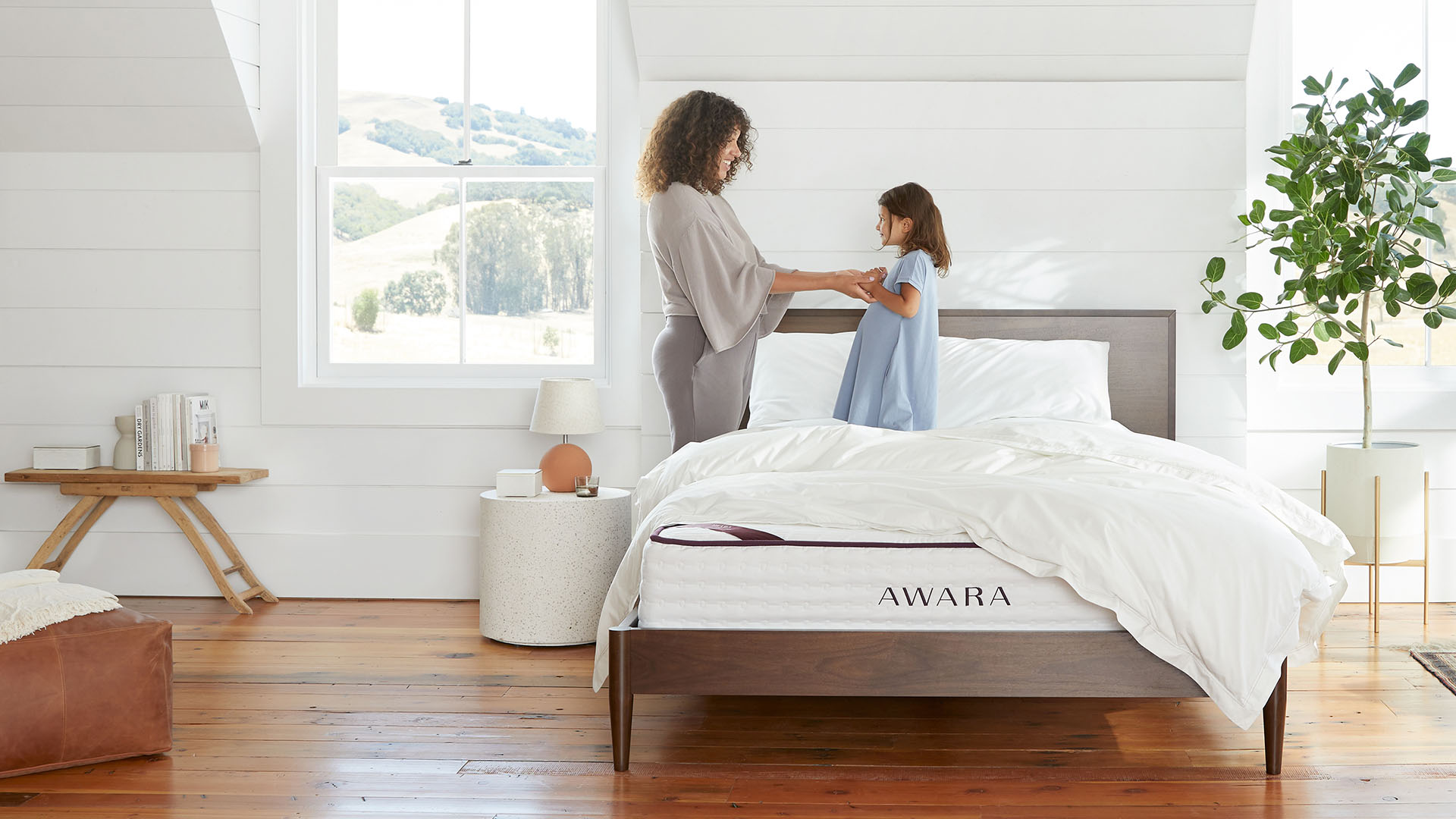Who should buy a king size mattress? We take a look at who this bed size would suit

Debating whether to upgrade to a king size bed? The best king size mattresses come with plenty of advantages (like all that space to stretch out) but there are also some notable downsides. For a start, the extra inches are reflected in the price tag – you'll have to pay more, in other words. This luxurious choice isn't for everyone. But might a king size mattress be the right bed for you?
We should start by clarifying what we mean by a king size mattress... and rather unhelpfully, although the term is used in both the US and the UK, it doesn't mean the same thing in both territories. Here are the measurements you need to know:
- US king size: 76 inches wide, 80 inches long (193cm x 203cm)
- UK king size: 60 inches wide, 79 inches long (150cm x 200cm)
In the US, a king sits one size above a queen mattress (60 inches x 80 inches) and one size below the California king (72 inches x 84 inches). You can also get a split king (76 inches x 80 inches) and a split California king (72 inches x 84 inches). These have the same measurements as a non-split bed, but are divided down the middle.
In the UK, it's one size above a double (135cm x 190cm) and one size below a super king (180cm x 200cm). That's a lot to take in, so if you want a bit more information, head across to our US vs UK king size mattress guide.
King sizes are one of the most popular mattress sizes, and all of our best mattress picks are available in king size. If you want a king size mattress, you'll almost definitely need to invest in a bigger bed frame and larger bedding, but for some people, it's worth paying for the extra space. Let's explore who can benefit from a king size mattress.
5 types of people who benefit from a king size bed
If you have the space in the bedroom (and in your budget) these are the people who can best benefit from a king size mattress.
1. Couples who like their space
Despite being just one size down, a US queen and a UK double are significantly smaller than their king size counterparts. For bed sharers, cozying up in a queen or double can lead to cramped conditions overnight. A king size adds a few extra inches all round, so you have space to truly get comfortable (without needing a separate bed from your loved one).
Sign up for breaking news, reviews, opinion, top tech deals, and more.

And it isn't just couples who can benefit from the added space of a king size. A king mattress brings luxury to the solo sleep setup that even the best queen size mattress can't match.
2. Taller people
Tired of your toes hanging over the edge of the mattress? King size beds are longer than their queen counterpart, so taller people – and those who sleep with their arms above their heads – can feel supported from head to toe.
Although, if you’re very tall and live in the US, you may prefer a California king. These massive mattresses measure 72 inches wide by 84 inches long, meaning even the very tallest among us have room to stretch. However, while you gain some height, you do sacrifice some width. (For UK readers, the super king does add width, but comes with no extra length.)
If you're wondering just what mattress size is right for your height, our guide to UK vs US mattress sizes can help you navigate everything from the super small to the extra tall.
3. People whose kids like to bunk in with them
Little kids can take up a surprisingly large amount of space in bed, especially as they’ve rarely mastered sleep etiquette (‘your side of the bed’ doesn’t mean very much to a toddler). For nights when the kids want to snuggle up with you, a king size bed ensures you won't be stuck clinging to the edges or piled on top of each other.

A king size mattress can also benefit pet parents who like to curl up with their pooch. Perhaps your Dachshund can fit around your feet, but if you're trying to accommodate a full-grown golden retriever, a king size means no one is banished to the dog bed.
4. People who like to move in the night
Find yourself on the brink of sleep divorce? Whether you like your freedom to toss and turn or your partner loves to shuffle around in their sleep, a king size provides ample space for you to get comfortable without disturbing your bedmate. Memory foam is particularly good at absorbing movement and stopping it from traveling across the bed, so if you want to hardly know your partner is there, consider one of our best memory foam mattresses in a king size.
If you live in the US, another option is the split king (or split California king). Split mattresses have the same dimensions as their regular counterparts, but they're split down the middle – essentially, two mattresses pushed together. This split ensures excellent motion isolation. Movement can't travel from one surface to another, so you won't feel your partner shift.
Mattresses tend to be firmer at the center and weaker at the edges. This means when you toss and turn on a queen size, you run the risk of losing support. But with a king, even one that’s lacking reinforced edge support, you still have lots of surface for tossing and turning.

5. People with big bedrooms
One of the major disadvantages of the king size mattress is that they can overwhelm a small bedroom, dominating the space and leaving you skirting the edges whenever you want to move around.
But if you have a big room, a king size can slip right in. The larger the space, the more natural a king size bed will feel. If you have a truly palatial bedroom, you might consider upgrading to a California king (or keep an eye out for the very rare Alaskan king, which measures a massive 108 inches by 108 inches).

Ruth is TechRadar’s Sleep Writer. She’s here to help you find the perfect sleep setup for your budget and personal preferences. As well as keeping a keen eye on everything that’s going on in the world of mattresses, she regularly speaks to experts to help you learn how to improve your sleep habits, whether that’s by debunking sleep myths or explaining the science behind it all. Prior to joining the TechRadar team, she wrote features and product guides for new parents hoping to get a decent night's sleep, as well as writing for a variety of online spaces.